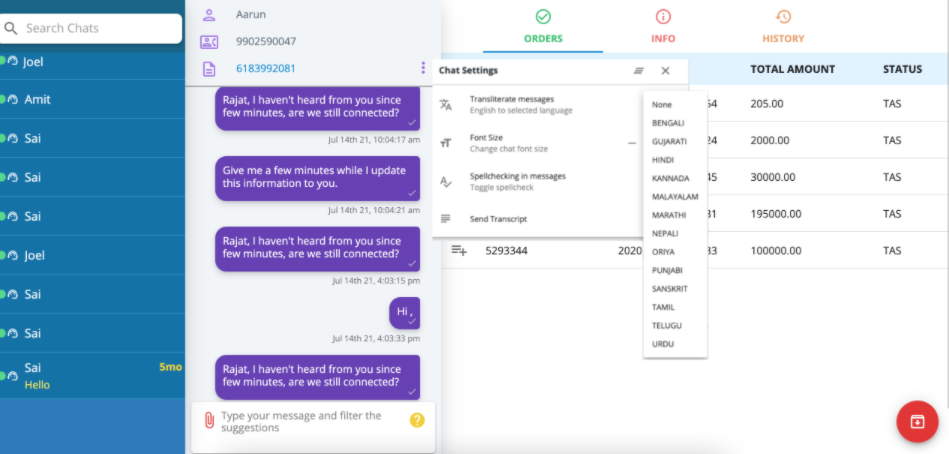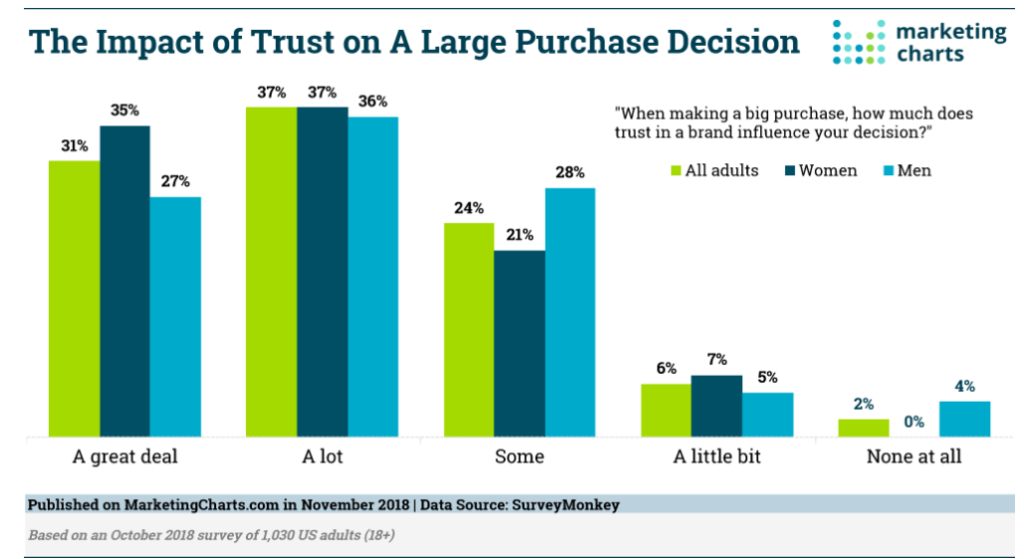What Is Customer Perception?
The act of perceiving means forming a mental image, concept, consciousness, or awareness of something through physical sensation or experience.
Customer Perception is what your customer feels and thinks about your brand. Customers perceive your brand using the five senses plus the experience factor. The information thus gathered formulates the customer perception positively or negatively.
Like it or not, customer perception is a customer thing. We may not be the brand we think of ourselves to be, in the perceived world of our customers. So how do we know our standing? Certainly, by tracking customer perception.
Know-How To Track Customer Perception
There are many ways to do it but read about some of the gainful ones here.
1. Running Standard Surveys
An effective way to track customer perception is through standard surveys such as CSAT, NPS, and CES.
- CSAT Or Customer Satisfaction survey tells what customers feel about a particular experience with your brand. It measures their satisfaction level.
Survey different points of interactions such as post onboarding and online checkout, sales or service interactions, and also cover general experience as well.
By running a survey you are opening up a channel for the customers to voice their opinions. You also earn an opportunity to clear away the negative perceptions whatsoever.
- NPS Or Net Promoter Score is the measure of customer loyalty. The score is calculated by asking customers the question, “How likely are you to recommend us on a scale from 0 to 10?”. Promoters rate your brand with a score of 9 or 10 and are likely to recommend your brand.
The detractors rate you between 0 to 6 and are probably not in love with your brand.
Lastly, the passives who rated you with a score of 7 or 8 do not actively recommend your brand as they do not care. So do what it takes to improve customer perception of your brand.
- CES Or Customer Effort Score– The CES score is a measure of the effort the customer has to put in to get an issue resolved. When the effort required is minimal, the customer naturally develops a good perception of your brand.
2. Social Media Monitoring
Social media is the hub of opinions and feedback. Make it a point to monitor social media and watch out where the mass opinion and feedback is drifting to.
The negative posts could be a result of a misinterpreted experience or information. Reply to the posts promptly to cultivate positive emotions and clarify the misinterpretations.
3. Gather Feedback From Targeted Segments
Collect feedback from the targeted customer segments. Customers can be segmented based on different demographics. Send out personalized feedback questions to each of these segments to get an in-depth understanding of their perception as opposed to common feedback collection.
Segment-oriented feedback can throw light on the reasons behind a particular way of perception. You may be able to analyze that the brand perception by a particular segment of customers is so because of a common cause.
Now, you know how to turn around that perception.
4. Follow-Up
Follow-up with the customers after every interaction through an email, message, or call.
You get an in-depth understanding of customer perception this way as customers tend to give away a lot of their feelings and emotions through emails and one-to-one calls.
5. Google Alerts
Sign up for google alerts and monitor the preferred keywords like your company’s and product’s name, buzzwords in your business, or competitor name. Google sends you an email alert when any of these keywords appear online.
6. Analyze The Sentiment
Artificial Intelligence-based technology can identify sentiments in customers’ messages by mining appropriate keywords. You can modify your responses towards customers to bring them the right perception.
Natural Language Processing, a component of Artificial Intelligence, can understand human language in the natural form. Give customers the option to communicate in their native language to better understand their perception.

Ways To Improve Customer Perception
Embed Honesty As A Virtue In Business Policies
Customers appreciate it when you are honest with them. Talk upfront with customers about flaws or unfortunate lapses as this shows how much you value the relationship with your customers.
By doing this, you have also brought them a step closer to trusting your brand.
Share Testimonials
Customers give more weightage to testimonials rather than marketing collaterals, as testimonials are about peers sharing their experience with your brand. So, establish your brand credibility with testimonials.
Automate Your Interactions
Customer Relationship Management (CRM) tools running on cloud technology has the potential to manage businesses of all size in-
- Handling interactions with current and prospective customers
- Tracking volumes of customer data to understand customer perception
CRMs can acquire data related to customer interests, previous purchases, browsing details, or history of interactions with your brand which could give you better insight into customer perceptions. Eventually, letting you strengthen customer relationships and loyalty along with guaranteed data security.
- Offering the ideal and consistent way to keep in touch with customers
Send out regular, timed, and automated emails that can be personalized for the targeted customer base. Get to know your customers better by not missing out on any opportunity to interact with them.
Also, offer your customers a consistent experience by sending messages and personalized emails to let them positively perceive your brand.
- Enabling you to use the right customer data for marketing campaigns to target promotions to the right customer base.
- Offering attentive customer service at the speed and excellence brought on by automation.
Handle complaints raised through multiple channels like calls, social media, or messages without losing any inquiry. This is because each inquiry gets auto-logged into a central system which also makes it possible to reply to the queries from the same system.
- Helping track customer responses after every interaction by enabling feedback collection through automated survey forms.
Read about what leads customers into specific perceptions!
Factors That Impact Customer Perception
Customer Reviews
Reviews on social media platforms are a determining factor of customer sentiment and thereby the perception. Customers can easily form an opinion about your brand by reading mass reviews regarding a particular pain area or defect.
Therefore, never leave any negative posts or reviews unanswered. When customers read your side of the story be assured that they might give it a thought before forming an explicit opinion.
Look And Feel
The look and feel with regards to packaging shapes the customer perception, particularly at the time of purchase. The attractiveness of the packaging and display of the product appeal to the customers and add to the feel-good factor and hence better visual perception.
Advertising
It is the way you present your brand to the customer. Let it never be misleading. Make sure your brand is what you project it to be so that the customers know they were right about your brand.
Quality Of Service Or Product
Nothing beats an excellent product or superior service. Customers would love your brand if you give them what they want in terms of quality.
Excellent service can also outdo a negative experience with your product. When customers receive the care they deserve they are more likely to trust your brand.
Their first-hand experience with your product or service can influence the perception of your brand.
Experience
Customers’ face-to-face experience with your brand directly molds their perception of your brand. This encompasses experience with everything about your business starting from the first hand-shake to the brand image, packaging, quality of product, service, peer reviews, website browsing, and many more.
Pricing
Let us look at the two contradictory effects that pricing has upon customer perception. Firstly, customers are always up for a bargain and generally prefer a budget-friendly product. Secondly, customers perceive low-priced items as cheap.
Therefore, have the pricing at a level that goes with the true value of your product. At the same time, inexpensive items must also be marketed as a value-for-money alternative to similar products.
Origin Of Customer Perception
Customer perceptions originate at two main junctures.
- When customers hear about your brand through word of mouth or reviews.
- When customers directly interact with your brand, either through purchase or service.
Both the points of origin are important and life-changing for your brand.
Importance Of Customer Perception
Being a living soul, customers use the perceived information about your brand to guide them towards decision making. Therefore, this directly impacts customer retention, acquisition, loyalty, and other crucial business goals thereon, positively or negatively based on the customer decision. As per reports by, The State of Customer Service,
“86% of respondents who have read negative reviews claimed that the information impacted their buying decision.”
Source: Marketing charts
In the world of buying and selling, perception holds a position that can turn out to be very consequential to your brand. So,
Set the tone for the right customer perception with Kapture. Try a free demo now!
About the Author | |
 | Seema C Mohan |
| Seema C Mohan is a content writer at Kapture. She is passionate about all things XaaS and loves to write value-added content. She has been in Business Process Management in the past and has experience in streamlining processes for Enterprise Mapping Projects. She has published technology articles in National and International journals. Her job at Kapture helps her gain more insight into the SaaS industry and emerging technologies. | |
,
,
,
,
,
,
,
,
,
,
,
,
,












